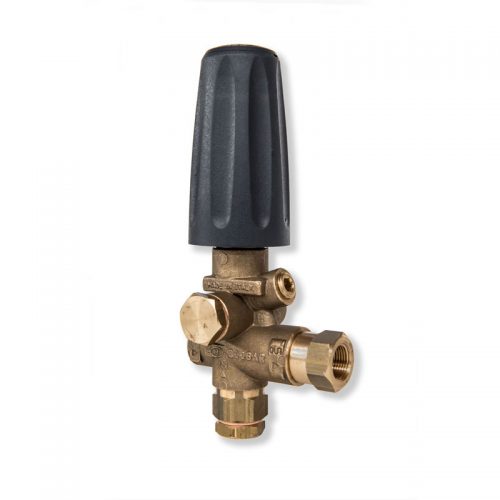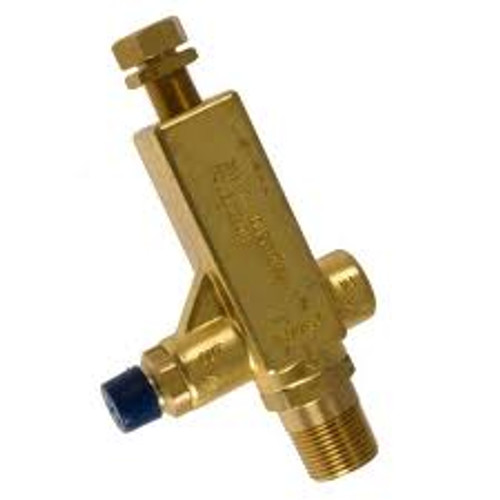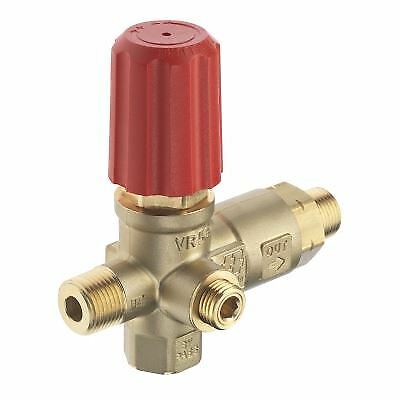Have you ever wondered how pressure washers maintain their powerful spray without causing damage or creating safety hazards?
The answer lies in the ingenious design of pressure washer unloader valves.
These valves play a crucial role in regulating pressure and relieving excess pressure, ensuring optimal performance and safety during your cleaning tasks.
They operate through a combination of mechanical and hydraulic principles.
Let’s take a closer look and check out the various types available.
What Are Pressure Washer Unloader Valves?
Pressure washer unloader valves are essential components responsible for controlling the pressure and flow of water within the system.
Their primary function is to regulate the pressure output of the pressure washer and relieve any excess pressure that may build up during operation.
By maintaining an optimal pressure level, unloader valves protect both the pressure washer itself and the user operating it.
Pressure Washer Unloader Valve Types
- By Design and Configuration
1. Bypass Unloader Valve

This is the most common type found in pressure washers. It features a ball and seat mechanism that controls the flow of water.
When the pressure exceeds the set limit, the ball lifts off the seat, redirecting the water flow.
Bypass unloader valves are reliable and widely used, offering efficient pressure regulation.
They, however, may require periodic maintenance to prevent issues such as debris accumulation or wear.
Pros
- Reliable and widely used in pressure washers
- Efficient pressure regulation, ensuring optimal performance
- Provides a consistent pressure output during cleaning tasks
- Offers a straightforward design, making it relatively easy to understand and troubleshoot
Cons
- May require periodic maintenance to prevent issues like debris accumulation or wear
- Debris accumulation can hinder the valve’s proper functioning, leading to pressure inconsistencies
- The ball and seat mechanism may be prone to wear over time, requiring replacement
Related: Is 2000 PSI Good for a Pressure Washer? Yes, Because…
2. Flow-Actuated Unloader Valve

The valves operate based on water flow instead of direct pressure sensing.
They utilize a piston or diaphragm mechanism that responds to changes in water flow rate.
As the flow increases, the piston or diaphragm engages, diverting water to bypass the pump or adjusting the valve opening, thus maintaining a consistent pressure output.
Pros
- Operates based on water flow, offering a simple and reliable design
- Responds to changes in flow rate, maintaining a consistent pressure output
- Requires minimal adjustment and calibration
- Generally easy to maintain and troubleshoot
Cons
- May not be as precise in pressure regulation compared to direct pressure-sensing valves
- Can be affected by variations in water flow, which may impact pressure stability
- The piston or diaphragm mechanism may require occasional cleaning or replacement to ensure proper functioning
Flow-actuated unloader valves are known for their simplicity and ease of maintenance.
- By Adjustability and Pressure Range
3. Adjustable Unloader Valve
If you require flexibility in controlling the pressure output of your pressure washer, an adjustable unloader valve is an ideal choice.
These valves allow users to adjust the pressure setting to meet the specific requirements of different cleaning tasks.

By fine-tuning the pressure, you can achieve optimal cleaning results on various surfaces without risking damage.
Pros
- Provides flexibility in controlling the pressure output of the pressure washer
- Allows users to fine-tune the pressure setting according to different cleaning tasks
- Reduces the risk of damaging delicate surfaces by adjusting to lower pressure levels when needed
- Offers versatility and adaptability in various applications
Cons
- Requires regular monitoring and adjustment to maintain the desired pressure output
- As a user, you must have a good understanding of pressure requirements for different cleaning tasks
- May be more complex to operate and troubleshoot compared to fixed-pressure valves
4. Fixed-Pressure Unloader Valve
These are pre-set to a specific pressure level and don’t offer adjustability.
They’re commonly found in commercial or industrial pressure washers where consistent pressure is required for specific applications.
Fixed-pressure valves provide reliability and simplicity, eliminating the need for constant adjustments.
However, they may not be suitable for users who require versatility in pressure output.
Pros
- Pre-set to a specific pressure level, ensuring consistent pressure output
- Provides simplicity and reliability, eliminating the need for frequent adjustments
- Suitable for commercial or industrial applications where a specific pressure is required
- Reduces the risk of accidental pressure changes during operation
Cons
- Lack of adjustability limits versatility for different cleaning tasks
- Not suitable for users who require flexibility in pressure output
- May require additional pressure regulation mechanisms if the fixed pressure doesn’t meet specific cleaning requirements
Related: How to the Change Oil in Your Pressure Washer Pump
5. Variable-Pressure Unloader Valve
For those seeking the best of both worlds, variable-pressure unloader valves offer a versatile solution.
These valves allow for adjusting the pressure output within a predetermined range.
By changing the valve’s settings, you can adapt the pressure to different cleaning tasks, striking a balance between flexibility and consistency.
Variable-pressure unloader valves are popular among professional users who tackle diverse cleaning applications.
Pros
- Offers a versatile solution by allowing adjustments within a predetermined pressure range
- Provides a balance between flexibility and consistency in pressure output
- Enables users to adapt to different cleaning tasks and surfaces effectively
- Popular among professional users who handle various cleaning applications
Cons
- Requires proper understanding of pressure requirements for different cleaning tasks
- The adjustable nature may result in more complex operation and maintenance
- May be more expensive compared to fixed-pressure or non-adjustable valves
Related: Karcher Vs Greenworks Pressure Washer Review
Factors to Consider when Choosing a Pressure Washer Unloader Valve
Pressure Washer Specifications
The pressure rating and flow rate of your pressure washer should match the capabilities of the unloader valve.
Incompatible combinations may result in suboptimal performance, potential damage to the pressure washer, or even safety hazards.
Cleaning Application
Different cleaning tasks require varying pressure levels.
For instance, delicate surfaces such as cars or wooden decks may need lower pressures, while concrete or heavy-duty grime might require higher pressures.
Understanding the intended applications will help you to choose an unloader valve that offers the appropriate pressure range for your needs.
Maintenance and Durability
Look for valves made from high-quality materials that can withstand the rigors of pressure washing.
Also, opt for valves that are easy to maintain, with accessible parts and straightforward cleaning procedures.
Regular maintenance will not only extend the valve’s lifespan but also ensure optimal performance.
Related
- Ryobi Vs Craftsman Pressure Washers
- Best Pressure Washers Under $600
- How Does a Pressure Washer Unloader Valve Work? (Answered)
- Ryobi Vs Generac Pressure Washer (In-depth Reviews)
- Pressure Washing Pros and Cons
- Karcher Vs Ryobi Pressure Washers (Comparison)
- Ryobi Vs Simpson Pressure Washers (Final Verdict)
- 10 Best Places to Buy Pressure Washers
- Can You Use Motor Oil in a 4 Stroke Engine? Yes & No


